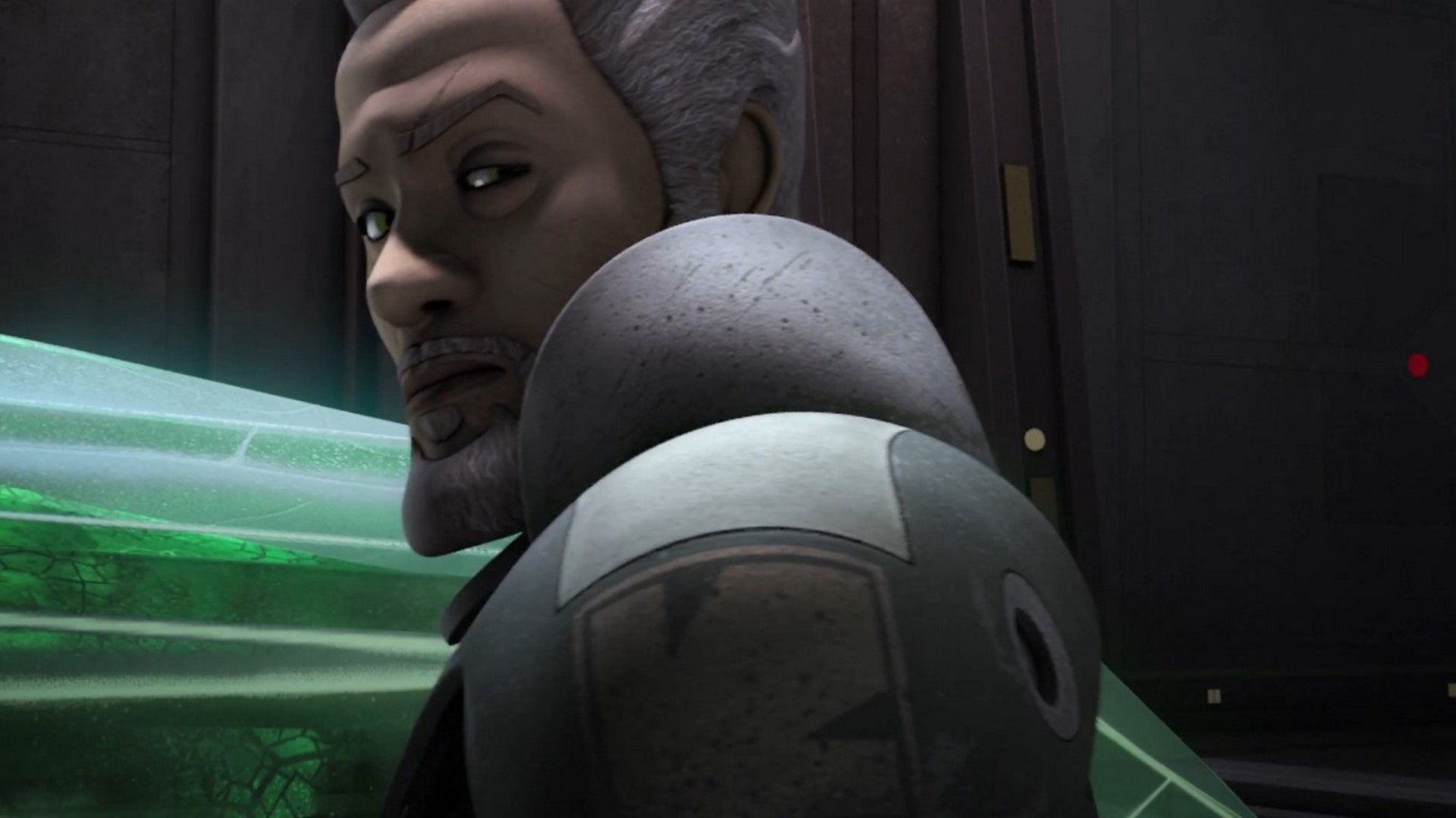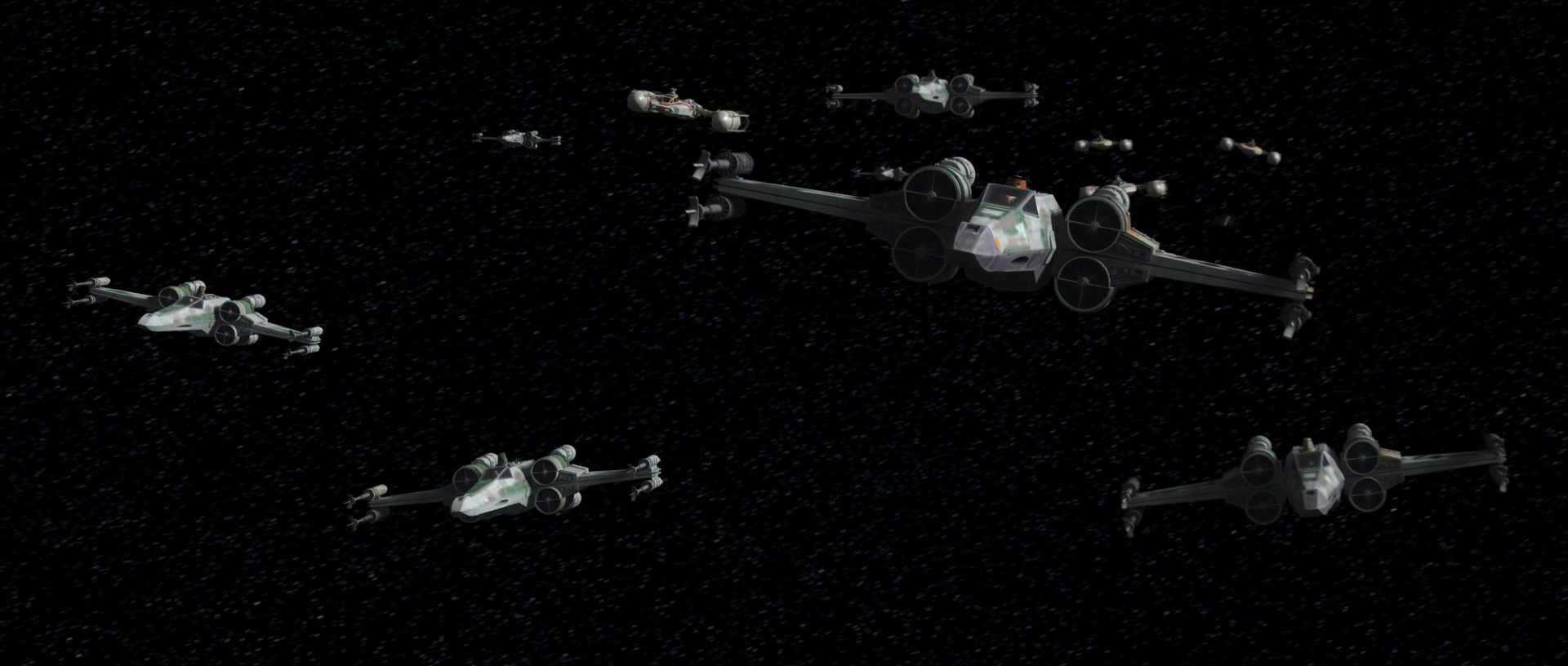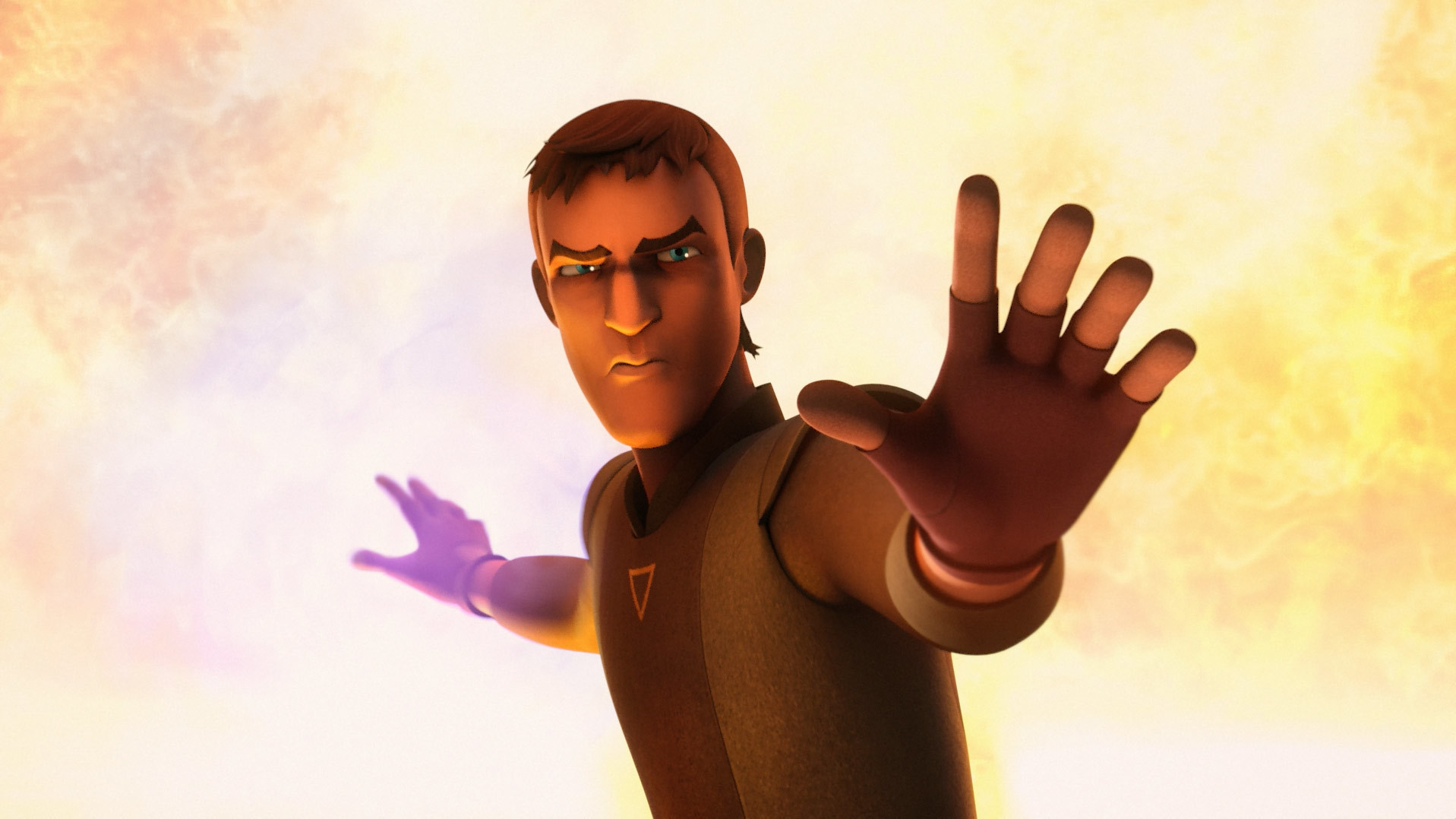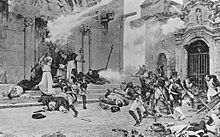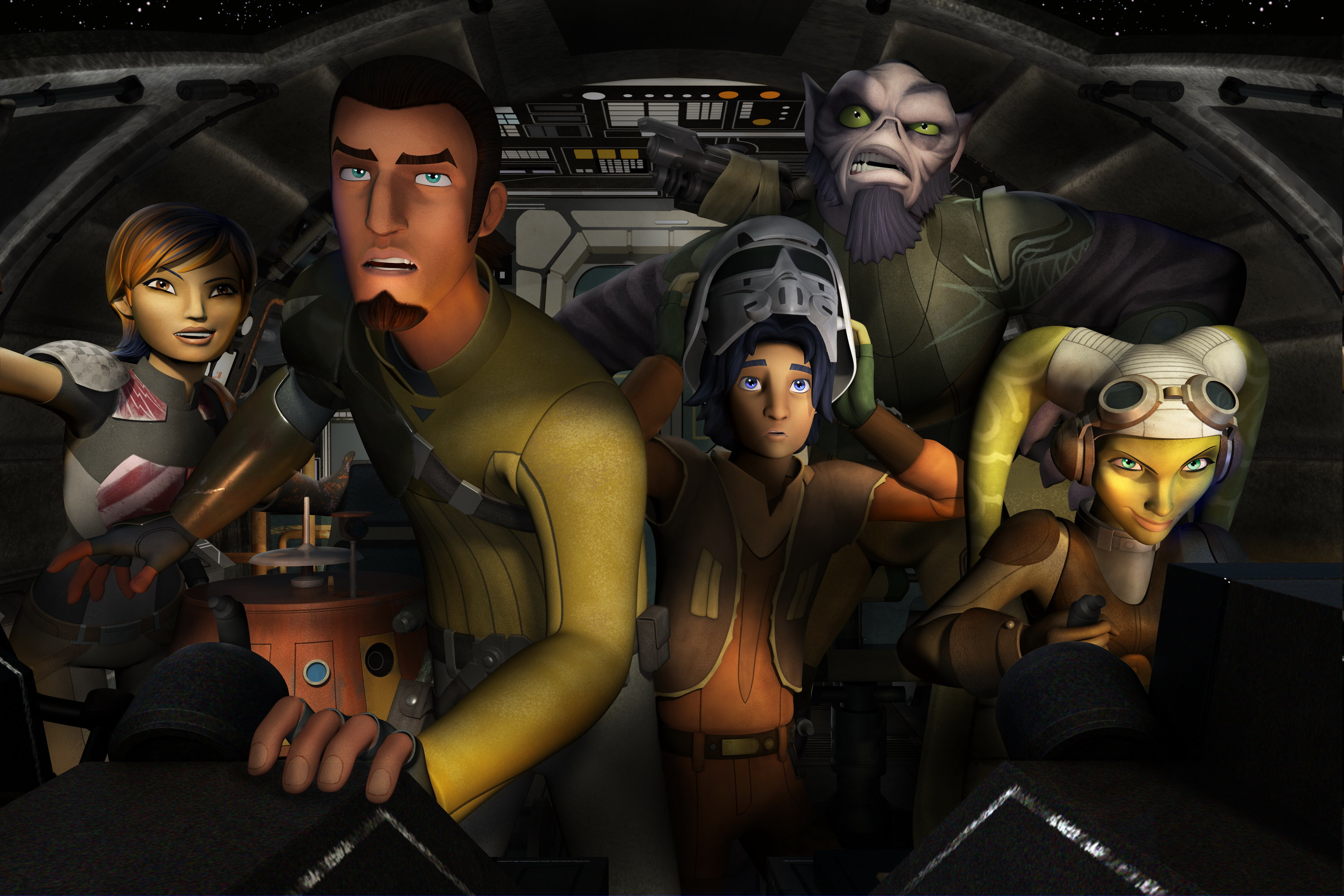Okay, first things first. I have not seen the last six episodes of season four of Star Wars Rebels and, judging by the descriptions, I don’t think I want to see them – not any time soon, at least. I know I am a minority opinion in this regard, and if my decision upsets you, I am sorry for hurting your feelings. But we’re not responsible for the choices of others; my decision is my own, so don’t feel bad if you think I’m wrong. That is your decision, and I certainly don’t feel bad about it. Neither should you.
All right, let’s review some of the episodes I did see. I mostly enjoyed Heroes of Mandalore, with just a couple of minor points of reserve/annoyance. One, I would have preferred to see Alrich Wren in Mandalorian armor rather than normal attire. He is a Mandalorian, for Pete’s sake; dress him like one! He can be less severe than Ursa Wren all day long, but that doesn’t mean you have to make him look like a wimp. Two, if Ezra could have actually been there to watch Sabine decide to destroy the Duchess rather than show up and beg not to be shot, I would have been happier.
This was the biggest sticking point for me in these otherwise excellent episodes. Seriously, what is so bad about letting the guy help the girl? Could someone please explain this to me? You could have had Ezra show up and deal with Tiber Saxon’s backup while Sabine fixed the Duchess to zap Stormtrooper armor instead of Mandalorian armor, couldn’t you? Then Ezra could help Bo-Katan turn Sabine from a desire for revenge to choosing to do what was right. He’s a Jedi, and he’s been where she is, and so I would think that would add some weight to his advice.
All right, venting done. On the plus side, it was good to see so much more of Mandalore. It was also nice to watch Bo-Katan letting go of her past while helping Sabine see her future, just as it was nice to see the Wren family and Rau survive this battle. Mandalore isn’t free yet, but it is on the road to freedom, and that means the Empire’s in trouble here for the rest of the Rebellion. (Yay!)
Next we had “In the Name of the Rebellion.” Now these episodes were more aggravating for me than the others, and that had less to do with the characters than it did with the way the Rebellion leadership behaved. In the original EU and film trilogy, the Rebellion was about doing, not talking. Whose bright idea was it to make the Rebel leadership so spineless in the new timeline, anyway? When we were originally introduced to Star Wars, the Rebellion was well past this political whining – if it had ever really had to deal with it. Watching them dither about committing troops to a fight or leaving their own bases absolutely grinds my gears.
That said, I agree that Saw Gerrera’s tactics are over the top and wrong. And I do agree with the writers’ decision to hammer this point home to Ezra and Sabine. Hitting the enemy hard does not mean you put innocent people in danger, which Saw was doing, and they needed to learn that truth.
However, Saw also had a valid point which the writers didn’t really do anything to explain; if you fight according to the enemy’s rules, you will lose. Because guess what, they are the enemy’s rules, and that means the enemy can change them any time they want. If you let the enemy do this to you, you won’t be able to adapt to the changes fast enough to survive, let alone win the fight. When you are fighting for freedom from tyranny, fight to win, dang it! Otherwise, get out of the way and let everyone else do their job.
As you can tell, this plot point really got under my skin, but there were things to enjoy here. Watching Kanan help Hera fly blind was great, and seeing a huge khyber crystal was very interesting. I also liked that these shows gave us a glimpse of the scientists the Imperials were using to make the Death Star. We rarely got to see prisoners being rescued by the Rebels in this series, so it was nice watching Ezra and Sabine work out how to destroy the crystal while protecting the prisoners at the same time.
Bonus points, we got a new Stormtrooper scream out of this show. I always love those. 😉
The rest of the episodes were fun and artfully done, from the return to Lothal to the mission to make contact with the Rebellion. I had a few points of disagreement with the writers along the way, though. Watching the Rebellion leadership wimping out again was seriously aggravating, as was the lack of Kallus’ presence in these shows when he had promised to have such an interesting part in this season. The general trend in “girrrrrl power” at the expense of the guys’ characters and masculinity was another demerit for this season, too.
But I would have to say that “Rebel Assault” was the show I had the biggest problems with, and not just because of the warning about Kanan’s impending demise. No, my biggest problems here were how the Rebellion decided to handle this attack and how the writers showed Hera fighting Rukh.
First, we will deal with the Rebellion. In “Rebel Assault,” the mission is supposed to be an attack on what is, in essence, a war factory. But somehow Mon Mothma, Bail Organa, General Dodonna, and the rest send nothing more than a couple of measly fighter squadrons to destroy it.
What the Sam Hill….? That makes no sense, even when you consider that Thrawn is the one directing the Empire’s defense. When we sent fighter planes over Germany and Japan, they weren’t carrying the bombs we dropped, the bombers were. Y-wings certainly have the capability to drop bombs, but they’re still, technically, fighters. Hera should have had at least a few corvettes and blockade runners backing her squadrons up on this mission, but that didn’t happen.
This mistake on the part of the writers immediately pulled me out of the story when I watched the trailers and led me to the conclusion that Hera’s attack was doomed to failure. No commander in their right mind, for a mission like this, would send in just fighters. The Death Star was so darn big that it had to be attacked by little bitty fighters, which it couldn’t swat as easily as it could have obliterated a bigger ship.
But in this battle, the Rebels were up against Star Destroyers. Yes, Star Destroyers are big, powerful, and scary. Unlike the Death Star, however, they can be challenged by ships of equivalent or smaller size with relative success.
Dodonna would certainly have known this, and I would think Mon Mothma and Bail Organa would know it, too. The fact that the writers did not send a support force with Hera’s squadrons shows me that they either weren’t thinking, they don’t have even a glancing knowledge of military history, or they were under pressure from their superiors. My money is on the latter, to be honest; these writers have shown a level of skill which makes it hard for me to believe they aren’t clever enough to think of these things or don’t know at least a bit about history. I can’t believe (not right now, anyway) that they would do this out of simple ignorance and thoughtlessness. They’re too smart for that answer to fly.
Now we come to Hera’s hand-to-hand battle with Rukh. I am sorry, Hera fans, but I had a major problem with this. In this episode, Hera crash lands in the capitol city of Lothal after her failed attack. Obviously, she has to escape back to camp so the Empire can’t interrogate and kill her. The main difficulty with this plan is that she faces a Noghri hunter – Star Wars’ version of a super ninja – who has been sent to bring her in for interrogation. Yet after crashing and being injured, she still manages to handle Rukh perfectly in close combat, despite having a headache and an injured arm.
Sorry for the blurriness of this shot.
Pardon me, but whaaat….?
Leave aside for a moment the fact that the Noghri are invisible to Force-sensitives (they can’t sense them through the Force at all) and that they are good enough at combat to scare competent Jedi like Luke Skywalker, Leia Organa Solo, and Mara Jade. Leave aside as well the fact that Wookiees, impressive, massive warriors that they are, cannot bring down a squad of Noghri without suffering serious wounds and severe losses. Bottom line, Hera’s injuries should have been limiting factors in her fights with Rukh. She should have tried harder to avoid hand-to-hand combat with him because of her weakened state.
A Noghri’s size is extremely deceptive; they are strong enough to go hand-to-hand with full-grown Wookiees and match them in physical power. The fact that Hera can somehow, with a bum arm and a headache, throw and hold Rukh so easily shouldn’t be possible in-universe. And yet the writers had a wounded Hera Syndulla rather easily hold her own in battle with an alien whose people are veritable super ninjas, beating out the Jedi, Mandalorians, and Mistryl Shadow Guards in terms of skill and prowess. (Author glances from side to side.) Am I the only one who sees a problem here? I like Hera – even though she is not my favorite character – but come on. Am I the only one who looked at this fight and went, “Agh, here we go with the girrrl power motif again”?
Yep, thought so. Told you I was the minority opinion. 😉
Speaking of which, now we come to the last six episodes of the season that I did not view. I missed the first two, where Kanan dies, and I avoided the other four or five in order to find out if they were shows I wanted to watch. From the descriptions I have read, I feel pretty safe in saying that I do not want to see the end of season four for Star Wars Rebels. There are several reasons for this, but to make sense of it, I am going to break it down into parts. Because everyone knows Kanan Jarrus was my favorite Rebel, we will start with him:
Kanan’s Death
Yes, part of the reason I do not wish to see the last six episodes of Rebels is because Kanan dies. I had a feeling it was coming, and I knew it was going to be especially upsetting for me personally. HOWEVER; this is not the first time I have seen a major character I liked die, so it is not simply the fact that Kanan croaks which makes me desire to avoid these installments in the series. In fact, when I think of where he died, I dissolve into giggles.
Now you are thinking I am some kind of heartless maniac, right? I don’t want to giggle over this – seriously, the guy was my favorite character! I spent lots of pixels talking about and praising him.
But every time I think of him standing on a fuel tank when it goes up, I just start giggling. There’s something kind of – I don’t know, anti-climactic in picturing someone being blown up while standing on top of a fuel tank. I guess it makes me think of all the bad guys I’ve seen/wished to see blasted off into kingdom come by a big explosion, or all those idiotic side characters who choose to stand in the wrong place at the wrong time and get blown up. There’s also the whole “blow-up-the-fuel-to-save-the-environment-while-standing-on-the-fuel-tank” angle to consider. It’s just – it strikes me as a rather comical place to die. And yes, I am giggling while I write this.
Now if I had seen Kanan die, I probably wouldn’t be so cavalier about this scene. It sounds like a tear-jerker, which is another reason I want to avoid it right now. None of my friends need me breaking down on them when we’re supposed to be relaxing in front of the TV, after all. And if I watched it alone, I would be stuck dealing with me sniffling. That is not nearly as much fun as the movies make it look, readers.
But the bigger reason is that I think that, if Rebels had been allowed to last longer, Kanan need not have died at all. We’ll delve into this a little more below, but does anyone else feel like the last six episodes were a bit rushed? It is as though someone told Filoni and the gang, “Season four is your last; kill the show. We don’t care how you do it – so long as you don’t kill the girls – but end this thing before 2019.” The last six episodes are jam packed, proceeding at a near breakneck pace I can sense just from the descriptions. There’s barely a pause for breath in each one.
Based on what I have read about these final installments, I think Filoni knew when he started this series that the higher ups at Disney/Lucasfilm wouldn’t like it due to their political leanings. He’s thrown some political bones into the mixture from time to time over the past three seasons, but on the whole, I would say he was telling a good story well here. There is nothing more aggravating to the “artísts” who insist that every piece of fiction should be a vehicle for one agenda or another. He knew he was on borrowed time, more or less, and that giving Kanan and Ezra their fair shakes would probably cost him in the end.
So when they told him to kill Rebels, he said, “Okay, but can I kill it my way?” They of course said yes, thinking he was being a good little drone doing what they wanted him to do. Personally, though, I believe he blew up Rebels rather than let them get their hands on it. This brings us to my next big problem with how the series ended….
Time-Travel…. Really? REALLY?!?
When I read the description for “A World Between Worlds,” I handled it pretty well at first. But thinking back over it, I began to get more and more uncomfortable. Even in the old EU, I was not happy with the writers’ decision to add time-travel to the Star Wars universe. Star Wars, like The Lord of the Rings and other fantasy stories, has a fixed timeline. You may be able to view the past in some way in Star Wars through the Force, but the idea of sending people backward and forward through time in the mythos never sat well with me.
This is why I didn’t like the old EU’s penchant for messing with time-travel. The reason I don’t like it in Rebels is that it completely negates the ending of season two of the series. In essence, it saves Ahsoka by cheating; sending Ezra back in time to save her instead of letting the Force protect her in some more spiritual/physical manner, knocks everything in Twilight of the Apprentice into a cocked hat.
Now if the “World Between Worlds” had been more like the “Wood between the Worlds” in Narnia, where the spiritual and physical planes sort of “meet” each other more completely than they do anywhere else, I would have been happier. In a case such as this, I would think the writers could have had Ahsoka escape to the “World Between Worlds” from Malachor either on her own or with the help of the Force. While a year or so passed outside the Lothal temple, for her, minutes would have elapsed between her arrival there and Ezra’s journey inside.
Because Ahsoka was here, and because this was a place where the physical plane and the Force sort of “touched” each other moreso than they otherwise do, the writers could have had the Emperor chasing the two down in an effort to convert/kill them and take over the place. Then, because this area intersected with the spiritual realm, the writers could have had Kanan’s spirit appear to help the two escape/thwart Palpatine.
Though not trained like Qui-Gon, Obi-Wan, and Yoda in keeping his form when he became one with the Force, I don’t think Kanan would have needed such training to appear in a place where the Force and the physical plane meet. Writing the story this way would also have allowed him a chance to say good-bye to Ezra while still giving him his “last lesson” as a Jedi. To me, this would not have been nearly so much of a cheat as the story we did receive in “A World Between Worlds” was.
Now we come to the third reason why I will not watch the end of Rebels…
The Battle of Lothal
I have two problems with this battle, and the first is the idea that the Empire left Lothal alone after the remaining members of the Ghost crew blew up all the Imperials on the planet. The idea that, one year out from the completion of the first Death Star and roughly five years before Endor, Rebels could throw the Empire off of a planet as valuable as Lothal and that planet would remain free until the final battle of Return of the Jedi is completely illogical. Anyone who knows anything about history can tell you this. For example, the Battle of Trenton did not free the United States from British tyranny, nor did it keep the British from coming back to Trenton. It took eight long years for us to boot them from our soil and guarantee the safety of all our citizens’ from English attack/retribution.
Likewise, the Rising of the Vendee against the revolutionaries who wrought such barbaric terror on France did not free their country. In fact, most of the Vendee fighters were slaughtered by the revolutionaries running the French Republic. The Cristeros in Mexico had it little better, which you will see if you watch the film For Greater Glory. Though the Mexican president was eventually forced to stop fighting them, the Cristeros were still being killed many years after the end of the Cristero War.
The people of Zaragoza, a city in Spain, rose up against Napoleon’s army after he conquered their country and threw the best troops in the world out of their city. Months to a year later, however, the Zaragozans were defeated by the vengeful French and the few remaining inhabitants were marched out of a city that was in ruins. The same thing happened to the Tyrolese – twice – when they fought Napoleon’s forces in an attempt to rejoin Austria after he had annexed their district from their mother nation.
My point in bringing up these examples is that you do not bloody a tyrant’s nose and get off scot free, readers. You have to keep fighting until the tyrant is six feet under, no longer on your country’s soil, or you are dead. And at this point in the mythos, Palpatine is still alive. Even considering the destruction of the first Death Star, he should have had forces committed to Lothal to at least wreak his vengeance on that world. The war was touch-and-go from A New Hope up to the moment Luke decided not to kill his father on the second Death Star. Like the rest of the galaxy, Lothal should only have been freed by the Battle of Endor, when Palpatine was killed.
The fact that the writers didn’t do this is absolutely mind-boggling to me. It also helps convince me of the theory I mentioned before; the people above Filoni must have told him to kill Rebels but to make it “a happy ending.” So he gave them what they wanted, but not what would actually work, ala blowing up the story rather than letting them get their hands on it. I could be wrong of course, but that is why you are reading this as an opinion rather than as a stated fact.
With regards to the splitting of the “space family” at the end of the show, it doesn’t sit particularly well with me, either. The whole point of the series seemed to be centered on this family holding together throughout the Rebellion. In keeping with that premise, I would have thought the writers would have kept the whole crew on or around Lothal for most of the Rebellion, until Endor put everything to rights (hence my belief that Rebels was killed early by the people running Disney/Lucasfilm).
If the writers had gone this route, it would have prevented the Ghost crew from running into Luke and the gang during the films, while not derailing Yoda’s line about Luke being the last of the Jedi. If Kanan was busy splitting his time between Rebel work and being a father, I don’t think Yoda would consider him much of a Jedi. The same would go for Ezra; with such an unorthodox teacher (and maybe a girlfriend of his own at that point), Yoda wouldn’t have thought of him as much of a Jedi in such a case.
And that brings me to my earlier point about Kanan not needing to die if the series had lasted longer. Even keeping his death in the story, the rest of this ending is too compressed and illogical to stand the way it is. This means that I think that if I tried watching these last two episodes alone, my head would explode from the sheer absurdity of the ending. It has to be the result, to my mind, of interference from the people running Disney/Lucasfilm. Filoni is too smart, from what I have seen, to do something like this and expect people to buy it.
In conclusion, I have to admit that the ending for Rebels has been a severe disappointment for me. But that is only in the ending. The first three seasons I will happily re-watch for many more years to come. I’ll probably watch season four’s first nine episodes again, too. And who knows? Maybe I will watch the last six shows at some future date.
For the time being, however, I am content not to watch them, due to the reasons listed above. Call me a coward or stupid or whatever you like, readers, but the fact is that, to me, these last six episodes are a non-ending. In my opinion they do not do justice to their characters, their story, or their audience. And right now I really, really do not need to deal with any of that.
Until next time, readers, may the Force be with you.


